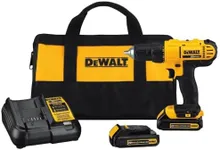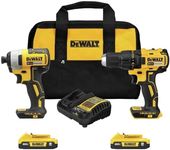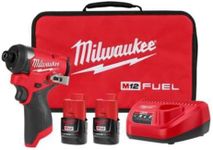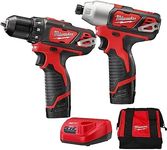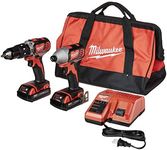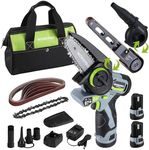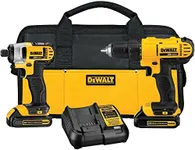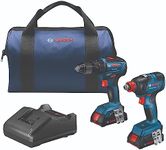Buying Guide for the Best Cordless Impact Drills
Choosing the right cordless impact drill can make a significant difference in your DIY projects or professional work. The key is to understand the various specifications and how they align with your specific needs. By focusing on the right features, you can ensure that you get a tool that is both efficient and reliable for your tasks.VoltageVoltage indicates the power of the drill. Higher voltage means more power, which is essential for heavy-duty tasks. Cordless impact drills typically range from 12V to 20V. For light tasks like assembling furniture or drilling into soft materials, a 12V drill is sufficient. For more demanding tasks like drilling into masonry or metal, a 18V or 20V drill is more appropriate. Choose based on the intensity of your projects.
Battery LifeBattery life determines how long you can use the drill before needing to recharge. This is crucial for uninterrupted work. Batteries are usually measured in ampere-hours (Ah), with higher Ah providing longer usage. For occasional use, a 1.5Ah to 2Ah battery might be enough. For extended or professional use, consider 3Ah or higher. Think about how long your typical projects last and choose accordingly.
TorqueTorque is the force the drill can apply to turn an object. Higher torque is necessary for tougher materials. Cordless impact drills often have adjustable torque settings. For light tasks, 20-30 Nm (Newton meters) is adequate. For medium tasks, 30-50 Nm is better, and for heavy-duty tasks, look for 50 Nm or more. Match the torque to the materials and tasks you will be working with.
SpeedSpeed, measured in RPM (revolutions per minute), affects how quickly the drill can complete a task. Most drills offer variable speed settings. Low speeds (0-500 RPM) are good for driving screws, while higher speeds (up to 2000 RPM) are better for drilling. If you need versatility, look for a drill with multiple speed settings. Consider the types of tasks you will perform to determine the necessary speed range.
Chuck SizeThe chuck size determines the maximum diameter of the bit that the drill can hold. Common sizes are 1/4 inch, 3/8 inch, and 1/2 inch. For light tasks, a 1/4 inch chuck is sufficient. For general use, a 3/8 inch chuck is versatile. For heavy-duty tasks, a 1/2 inch chuck is ideal. Choose based on the size of the bits you plan to use.
WeightThe weight of the drill affects how comfortable it is to use, especially for extended periods. Lighter drills (around 2-3 pounds) are easier to handle and reduce fatigue, making them suitable for overhead or prolonged tasks. Heavier drills (4-6 pounds) are more stable and powerful, suitable for heavy-duty tasks. Consider your physical strength and the duration of use when choosing the weight.
Additional FeaturesAdditional features like LED lights, brushless motors, and ergonomic handles can enhance the usability of the drill. LED lights are useful for working in dark spaces. Brushless motors offer more efficiency and longer life. Ergonomic handles provide better grip and comfort. Think about the environments you will be working in and any specific needs you have to determine which additional features are important for you.
